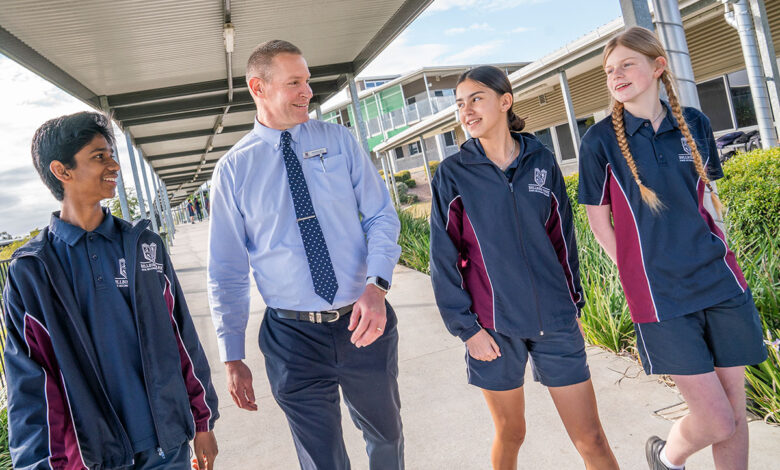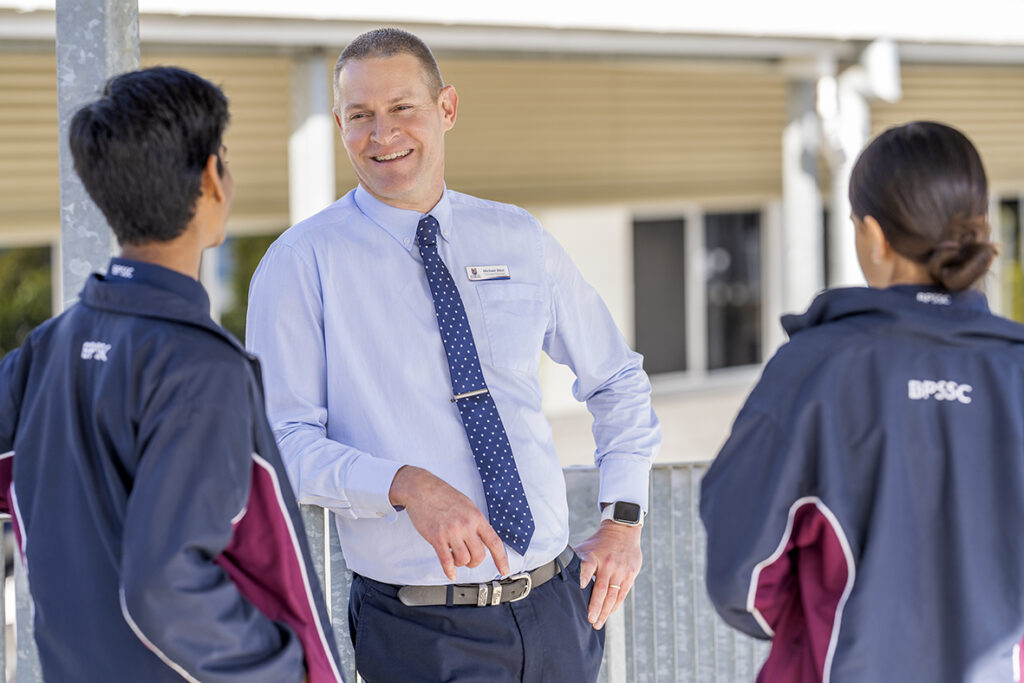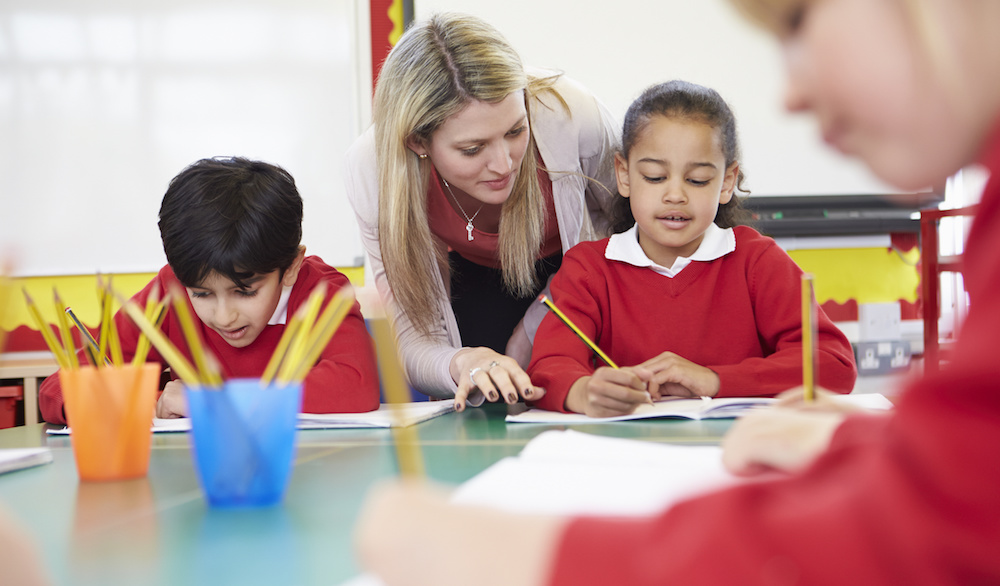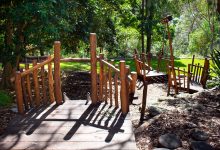
In mid-2016, I was appointed as the foundation Principal of Bellbird Park State Secondary College. This was an indeed a challenge, but would become the single biggest achievement of my career, engaging and creating a supported staff education professionals.
BPSSC opened in 2017 with 212 Year 7 students and 31 staff. Currently, we are the fastest growing school in the aspirational growth corridor in Ipswich, in south-east Queensland, with 1800 students and more than 150 staff members. I have been joined on this journey by an exceptional, strong and committed team. I have personally worked to develop leaders at all levels throughout the school, and I am proud of my staff. Much of my success is thanks to my incredible team.
Read the Term 4 edition of School News HERE
Teacher attrition is a persistent and well-documented problem in Australian education. The problem is especially acute in historically disadvantaged schools, where teachers are leaving the profession at increasingly high rates. Ensuring we have dedicated, enthusiastic and well-trained teachers is essential to provide our students with the education they deserve. I want our teachers to succeed, so our students can excel.
Every day, as educators, we challenge our students to learn, grow, and achieve their very best. We should, then, extend this same expectation to ourselves. I am passionate about improving the quality of teachers at all stages of their career. All staff should have the opportunity to further develop their skills and build on their experience. Coaching and mentoring, instructional leadership development, aspiring leadership development programs and providing opportunities for pre-service and beginning teachers are all important in achieving this.
I, along with my school, work hard to provide opportunities for all staff – both teaching and non-teaching — to reach their career aspirations. I have high expectations for all of my staff members. Through my leadership, I carefully support the individual development of each professional through regular and meaningful performance development exchanges.

At BPSSC, through our strategic plan, we have instigated several targeted strategies to retain our staff. Initiatives include the provision of quality professional development, to continue to grow our staff; strong and clear systems and processes for the management of behaviour and curriculum; and wellbeing and attendance support for our students to ensure that our teachers can teach, and our students can learn.
As a College we have developed initiatives that further improve teacher recruitment strategies for BPSSC. This will not only address the immediate staffing problem, but also promote ways to make teaching an attractive profession in our community in the long-term for the future success of BPSSC.
A major strategy is the Bellbird Park Teacher Guarantee. The Bellbird Park Teacher Guarantee aims to promote the profession of teaching as an attractive prospect for a life-long career. Key to this is the reframing of perceptions of and attitudes towards teachers. With my team at the College, I have sought to shift discussion around the profession, by highlighting the positive impact teachers have on students and their families. Beyond the classroom, teachers help to connect our community, providing an essential link between the school, students, staff and our broader local area. Of course, no one wants to work for free, so I have stressed the financial incentives of teaching, particularly for a beginning teacher.
We promote our teacher guarantee to the entire BPSSC community from our cleaners to our students. Attracting and retaining quality staff is essential for our school to continue to deliver the best educational outcomes for our students. Ensuring everyone in our community has the opportunity to explore teaching as a career is an important step in achieving this.
The guarantee promises that for any staff member or student at BPSSC who wants to become a teacher we will guarantee placements at our school for practicum placement; guarantee support during study, with assessment assistance and professional development opportunities; and guarantee employment at Bellbird Park State Secondary College when you graduate from the program.
At Bellbird Park State Secondary College, we cultivate a collaborative culture and enable continuous professional learning.
We take a multi-faceted approach to this, with several critical elements. Firstly, we foster a culture of collaboration and continuous professional improvement. We create opportunities for colleagues to work together and to learn from each other’s practices.
We have developed a detailed professional learning plan, and associated budget, to provide opportunities for staff that support school and, where appropriate, system priorities. Additionally, the school provides differentiated professional development to build teaching expertise in key areas, such as curriculum and assessment, pedagogy, and in analysing student data. We promote a range of evidence-based teaching strategies and provide opportunities for collegial sharing and structured classroom-based coaching, so that teachers and leaders can receive ongoing feedback on their practice.
At BPSSC we have an unwavering resolve to see educators continue to develop across their entire careers. I believe that a focus on continual improvement maintains motivation for teachers. All of the staff development structures at our school are established to ensure teachers continue to build their capacity, repertoire and stretch themselves yearly. We have implemented a systematic approach to staff observation, feedback and coaching that is aligned to our pedagogical framework and our explicit improvement agenda.

Our Collegial Engagement Framework priority is to build staff capacity, which sees our staff eagerly participating in targeted PD; classroom and peer observations; temperature checks and learning walks. We have built an ethos that collective efficacy and intentional collaboration embodies the belief that together we are stronger.
We support 150 staff members to uphold the college values of “years’ worth of growth for years’ worth of learning”. The desire to cultivate a space where staff could intentionally collaborate to build clarity, credibility, and efficacy, underpinned this work. The Collaborative Learning Communities (CLC) vision, was that, if we could harness precision, in using the right pedagogy at the right time, for the right context, we could enhance student access to the curriculum, and in turn achievement within the curriculum. The collaborative learning communities deliberately focus on teacher improvement and growth. All staff are members of CLCs.
A key feature of CLC longevity and success has been our rigorous quality assurance processes and responsiveness to staff voice and student outcomes, in reviewing and refining our approach. Another key feature of our success with these programs has been the retention of teacher facilitators. Retaining 70 percent since 2017 has enabled staff to build genuine high-trust relationships and team cohesion. The high performing staff who have relinquished their roles still hold additional responsibilities or promotional roles within education.
Our student cohort here at the College is diverse. Our teachers must be equipped to deal with the challenges each individual student faces, and adapt teaching styles to suit our learners. The success of our teachers is evidenced in our students results.
In 2022, 335, or 20 percent of our students were recorded as having a disability, and accessed adjustments to participate in the Australian Curriculum. We categorically refute segregation, and our 335 students with a disability are included in all aspects of College life, and curriculum delivery. We have successfully implemented inclusion on a very large scale. Students with a disability at BPSSC have an attendance rate which is trending positively, and student disciplinary absences among this cohort have decreased. All students with a disability are on a viable post schooling pathway.
We have demonstrated sustainable growth and progress for our students with diverse learning needs due to our whole school responsibility, shared accountability and differentiated teaching and support processes. Our use of ACARA’s CASE model (adapted to CAPSE model) to deliberately and systematically plan for differentiated instruction on a universal and individual level has had a highly significant impact on student outcomes and engagement. Each staff and faculty meeting is aligned to CAPSE as we move through the stages of moderation and differentiation – ensuring all of our entire staff ‘row in the same direction’.

The BPSSC community remains committed to reconciliation, diversity, and acceptance not only on our campus, but across our broader community, as we continue to deliver programs and initiatives that engage and inspire people from all walks of life. A Reconciliation Committee comprising teaching and non-teaching staff was formed in 2022 with a vision to ‘support our Jarjums to be successful learners with Deadly futures’. The Narragunnawali Reconciliation Plan guided the college’s review of processes and procedures to help ensure equitable educational access and success for First Nations students.
In the space of just one year, the Reconciliation Committee appointed targeted First Nations Outcomes Co-ordinators that assisted each and every First Nations student to gain a Queensland Certificate of Education, while all First Nations Year 12 graduates went on to further education, training or employment. This is a truly life-changing outcome that was backed by initiatives like The YAKKA (Hard Work) Room, a devoted study centre with culturally appropriate support workers; the development of a Yarning Circle; a community garden that incorporates local bush tucker; and the official opening of The Culture Hub, a culturally safe space for students to seek support and connect with culture.
We are proud of our successes as a College, and as a teaching community. I commend all of my staff for their hard work, dedication, and unwavering support for our ideals and values at BPSSC, and their commitment to our students. The strength and success of any school relies on its teachers. I am privileged to work with a great group of educators, and look forward to witnessing their continued growth and development.
Michael West is a mult-award winning educator, claiming the title of A Team Tuition School Principal of the Year -Government, in the 2023 Australian Education Excellence Awards. In the same awards, Michael was a finalist in the Principal of the Year category, while BPSSC was shortlisted for Special School of the Year, and the Ideagen Complispace Best First Nations Education Program. Additionally, Michael was awarded a Teaching Fellow in this year’s Commonwealth Bank Teaching Awards presented by Schools Plus.







